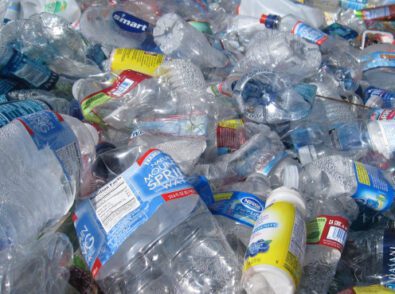Different Types of Industrial Composting
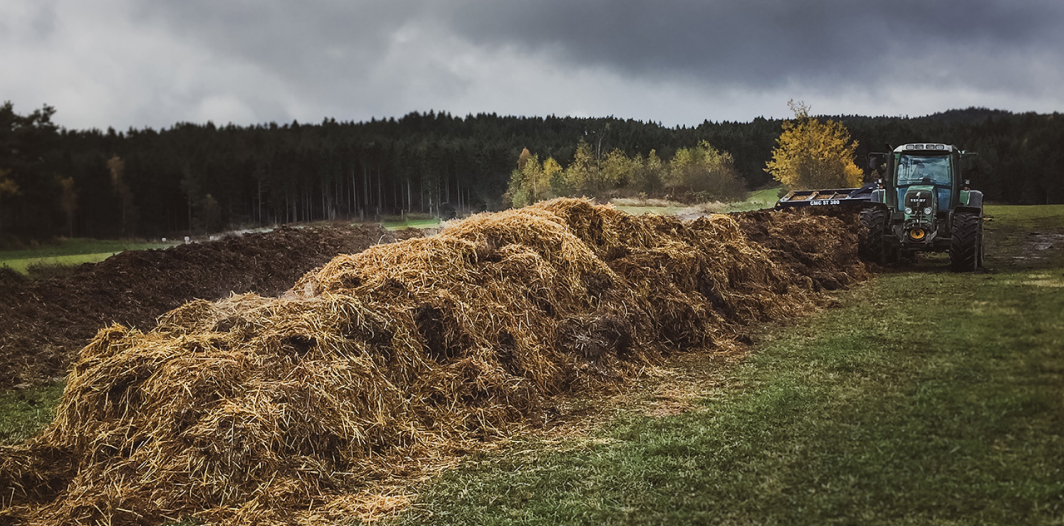
Industrial composting is intended to process high volumes of commercial and industrial organic waste, including municipal waste from household green bins and organic waste from restaurants and other businesses. Industrial composting can also break down compostable plastics and other biodegradable materials. The finished compost is then sold or passed on to nurseries, farms, and greenhouses to nourish the earth.
The importance of industrial composting facilities can’t be understated as they divert massive quantities of waste that would otherwise be buried or burned. In the US, 167 million tons of garbage is sent to landfills each year, about half of which could have been composted and used for more productive purposes.
Though decomposition happens naturally over time, industrial composting accelerates the process and makes it possible to break down a wider variety of materials, including bioplastics, which typically require higher temperatures to process.
Compost-rich soil produces healthier, more nutrient-rich foods and helps to protect our watersheds, filtering out stormwater pollutants by up to 95%.
More arable land means better food and more of it, helping to reduce food insecurity, a significant concern with so much poverty and hunger in our country today.
Additionally, industrial composting supports a more sustainable, circular economy through job creation. It also reduces waste in more ways than you might imagine; we need fewer trucks to haul it, thereby contributing to a cleaner environment.
What are the Pros and Cons of Each Type of Industrial Composting?
There are three main methods of industrial composting. Very few industrial composting facilities use all three; therefore, not all locations accept every kind of waste.
Windrow
Windrow composting, also known as turned windrow composting, is used for large volumes of garden waste, such as leaves, grass clippings, agricultural crop material, and animal manure. Windrows are formed in long piles and exposed to open air, generally in long banks of anywhere from three to eight meters across and one to four meters high, with adequate space between the rows to accommodate compost-turning machinery.
Waste is often combined with wood chips to bulk it up, making it easier for machinery to turn the piles. The compost is turned once every three days or so to aerate the material and stimulate microbial activity.
Composting using the windrow method generally takes eight to 16 weeks during the active cycle, with an additional four to six weeks to cure. The type of materials and pile size dictate the temperature and airflow within the piles. Depending on the turning strategy, it could take up to a year to produce finished compost.
Windrows are aerated primarily by passive airflow. For example, it’s harder to oxygenate a windrow if it is too large or wet. Conversely, smaller piles may not achieve high enough temperatures to kill pathogens and weed seeds as they lose heat more quickly.
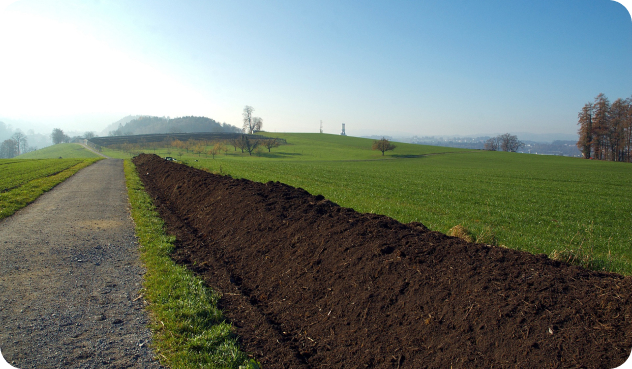
Windrow composting pros
- Efficiently process large volumes of waste.
- Product is dryer and easy to handle.
- Requires less investment in equipment compared to other methods.
Windrow composting cons
- Large tracts of land are required.
- Requires a rural location and large buffer zone to protect residential neighborhoods.
- Permits may be required.
- Compost can become anaerobic in wet climates.
- Odor-emitting, especially during the turning process.
- Attracts vermin.
Covered in Vessel
In-vessel composting occurs within a closed container, such as a concrete-lined trench, drum, or silo. Because of its contained environment, it generally does not take up as much space as the windrow method and is easier to control in terms of temperature, airflow, and moisture. The vessel is turned mechanically to aerate the compost inside, and the containers can be virtually any size.
In-vessel industrial composting can accommodate almost any type of organic material, including bio-solids, animal waste, and food scraps. Compost is produced in a few weeks as it is processed at a high temperature, but it will take longer to cool and balance the microbial activity.
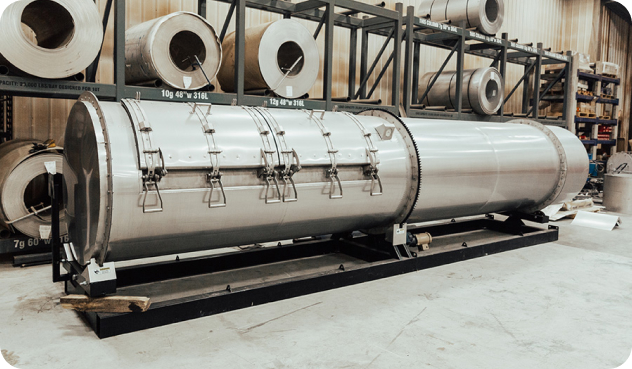
In-vessel composting pros
- Easy to control temperature and moisture.
- Reduced risk of disease from contamination.
- Reliable year-round use.
- Odors are contained.
- Does not take up as much space as windrow composting.
- Shorter timelines: viable compost in as little as a month.
- A wider variety of materials can be composted.
- Does not threaten local groundwater.
In-vessel composting cons
- Requires significant investment in equipment
- Needs electricity to control temperature and aerate the compost. As energy costs continue to rise, this will undoubtedly result in higher operational costs.
- Because it requires energy, it is not a sustainable composting method.
Areated Static Pile
Aerated static pile composting is a hot composting method that accommodates large quantities of organic waste. Static pile composting works much faster than other methods, producing a viable result in just a few months. However, the types of waste processed using this method are limited. It does not always work well for animal products or grease waste from food processing, although many farms use this method for composting manure.
Like the windrow method, waste material is often mixed with bulking agents to encourage airflow through the pile. However, the pile is not turned and remains static, using blower pipes placed at the bottom to deliver air into the pile or draw it out if needed. The pile is covered with a layer of finished compost for insulation.
The pile’s size is usually anywhere from eight to 15 feet high and usually twice as wide. However, the size is ultimately limited to the amount of aeration that can be accomplished by the pipes below. Static pile compost can finish in a hot environment in four to eight weeks. In colder climates, it could take up to a year.
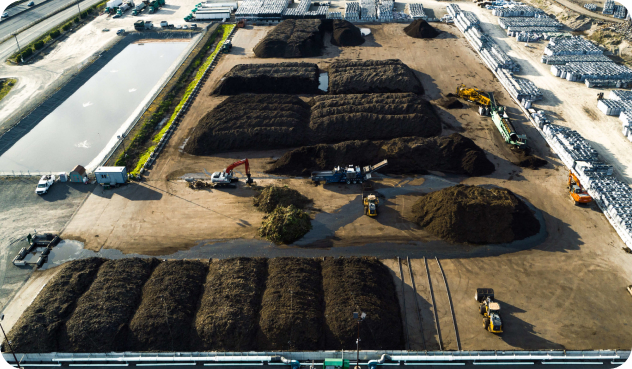
Static pile pros
- Minimal investment.
- Minimize odor concerns.
- Good for wetter compost vs. other methods.
- Composts large quantities of waste in a smaller footprint.
- Easy to maintain.
- Faster results (with some caveats).
Static pile cons
- Requires careful monitoring to ensure the pile does not dry out.
- Blowers require electricity, which can increase costs.
- Relies on other materials, like finished compost or mulch.
- Not always an efficient use of space.
- Animal waste and manure extend the timeline and could take up to a year to process.
Which Industrial Composting Method is Best for Bioplastics?
Bioplastics require high temperatures to break down and are processed only at industrial composting facilities. Thus, any of the above methods will work. It’s imperative to double check with your communities waste management systems if there are composting sites available or if everything is headed to landfills. It should be noted, however, that bioplastics are not suitable for backyard composting systems. Without proper disposal, bioplastics could infect waste streams and take decades to break down entirely. Compostable plastics are not intended to end up in a landfill.
References
- https://ilsr.org/compost-impacts-infographic/
- https://www.fao.org/soils-2015/news/news-detail/en/c/277682/
- https://www.feedingamerica.org/hunger-in-america
- https://compostmanufacturingalliance.com/partner-facility-locator/
- https://www.scarabmfg.com/what-are-compost-windrow-turners-and-how-can-they-help-you/
- https://www.sciencedirect.com/topics/agricultural-and-biological-sciences/windrow-composting
- https://www.planetnatural.com/composting-101/compost-digesters/anaerobic/
- https://www.epa.gov/sustainable-management-food/types-composting-and-understanding-process#invessel
- https://composthq.com/composting/aerated-static-pile-composting-explained/#What_Can_Be_Composted_with_ASP_Systems
- https://www.colorado.edu/ecenter/2021/03/10/bioplastics-are-they-good-they-seem



